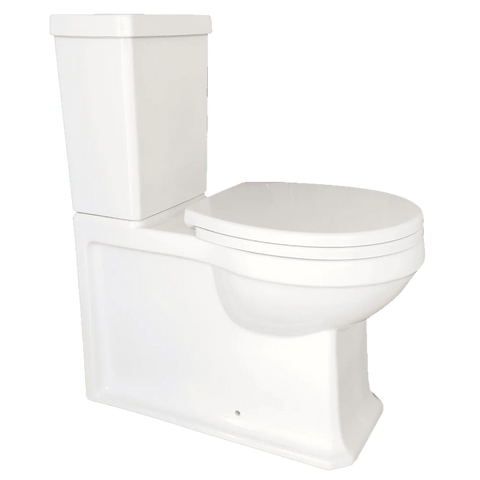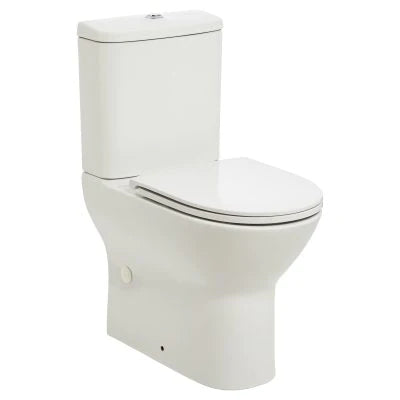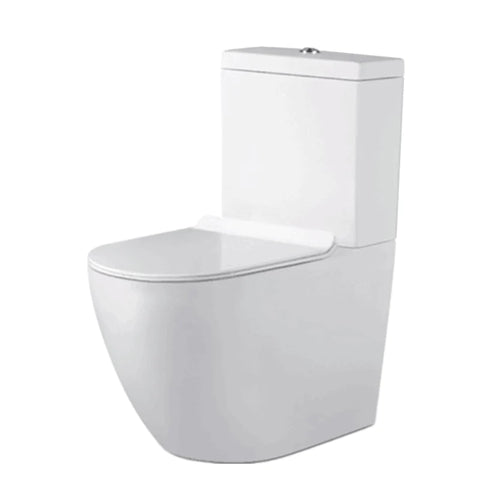Rimless toilets are designed without a traditional rim, which is the raised edge that surrounds the bowl of a traditional toilet. This design eliminates the areas where waste can collect and harbor bacteria, making rimless toilets more hygienic than traditional toilets.
Rimless toilets also tend to be more water-efficient than traditional toilets because they use less water to flush waste down the drain. This is because the water stream from a rimless toilet is more concentrated and can therefore remove waste more effectively.
Here's a step-by-step guide on how a rimless toilet works:
- When you flush the toilet, water is released from the tank and flows into the bowl.
- The water stream from the rimless toilet is more concentrated than the water stream from a traditional toilet, so it can remove waste more effectively.
- The water stream also flows from the top of the bowl to the bottom, which helps to prevent waste from splashing back up.
- As the water flows through the bowl, it washes away any waste and bacteria.
- The waste and bacteria are then carried down the drain by the water.
Rimless toilets offer a number of advantages over traditional toilets, including improved hygiene, water efficiency, and noise reduction. However, they can also be more expensive and more difficult to clean. Ultimately, the decision of whether or not to buy a rimless toilet is a personal one.
Here are some of the benefits of rimless toilets:
- Improved hygiene. Rimless toilets eliminate the areas where waste can collect and harbor bacteria, making them more hygienic than traditional toilets.
- Water efficiency. Rimless toilets use less water to flush waste down the drain than traditional toilets. This can save you money on your water bill.
- Noise reduction. Rimless toilets are generally quieter than traditional toilets because the water stream is more focused and does not splash as much.
Here are some of the drawbacks of rimless toilets:
- Price. Rimless toilets can be more expensive than traditional toilets.
- Cleaning. Rimless toilets can be more difficult to clean than traditional toilets because the lack of a rim makes it easier for waste to get stuck in the bowl.
- Accessibility. Rimless toilets may not be suitable for everyone, such as people with disabilities or mobility issues.
If you are considering buying a rimless toilet, there are a few things you should keep in mind. First, rimless toilets can be more expensive than traditional toilets. Second, rimless toilets can be more difficult to clean than traditional toilets. Third, rimless toilets may not be suitable for everyone, such as people with disabilities or mobility issues.
Overall, rimless toilets offer a number of advantages over traditional toilets, including improved hygiene, water efficiency, and noise reduction. However, they can also be more expensive and more difficult to clean. Ultimately, the decision of whether or not to buy a rimless toilet is a personal one.
Here are some additional tips for cleaning a rimless toilet:
- Use a toilet brush with soft bristles to avoid scratching the surface of the bowl.
- Use a toilet bowl cleaner that is specifically designed for rimless toilets.
- Flush the toilet after cleaning to rinse away any cleaning solution.
- Wipe down the outside of the toilet with a damp cloth.
By following these tips, you can keep your rimless toilet clean and sanitary.
Our Best Sellers!
1. Abey Australia - Burlington Traditional Rimless Wall Faced Toilet Suite

2. Johnson Suisse - Emilia Toilet

3. Norico - Bathroom Rimless Back To Wall White Ceramic Toilet Suite

Shop our range of rimless toilets here https://www.plumbersupplies.com.au/collections/rimless-toilets-1
Find your new rimless toilet here > https://www.plumbersupplies.com.au/collections/rimless-toilets-1
